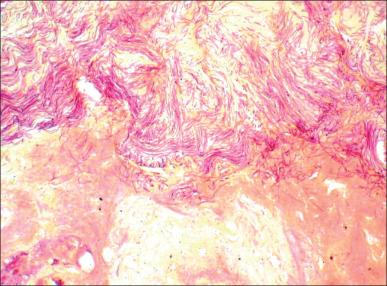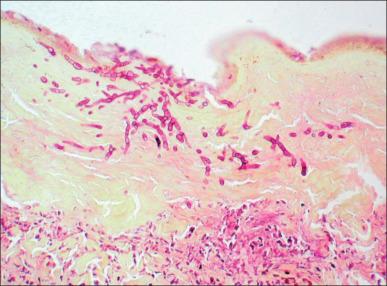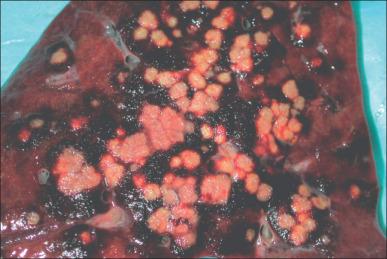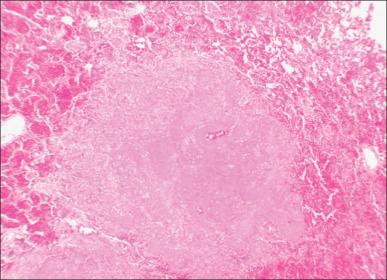Physical Address
304 North Cardinal St.
Dorchester Center, MA 02124
A large burn is not a simple injury but a very complicated disease. This statement, restated from its publication in 1840, holds true with additional force in 2016. Massive destruction of skin tissue by burns stimulates many complex reactions that are still only partly understood. Malfunction of every organ system complicates the responses of patients to large burns. These malfunctions can be clarified by examination of the body after death. Postmortem examination also may reveal unsuspected infections or adverse effects of therapy. In addition, postmortem examination leads to review of the circumstances of injury and of the causal sequence in which complications occurred. Analysis of an entire case from the point of view of pathogenesis often clarifies the nature of the patient's most significant problems. The manner of death is accident in most cases, but collection of additional information on the circumstances of the initial injury sometimes reveals evidence of homicide. After presentation of the major systemic problems that occur in burn patients, this chapter reviews some of the observations made at autopsy organized by organ system. It also surveys experimental evidence that bears on pathogenic mechanisms relevant to disease processes seen at autopsy. The observations reviewed here are drawn from the experience of more than 300 autopsies performed on burned children who died at the Shriners Burns Hospital in Galveston, Texas, from 1971 to the present.
Immediately after burn injury, massive loss of intravascular fluid into the burned tissue begins to occur. Unless this fluid loss is replaced very promptly and carefully, serious hypovolemia develops. Hypovolemia and the resulting reduction of tissue perfusion to levels less than that necessary for cellular survival, which is defined as ischemia , causes necrosis of certain cells. Typically, the cells first affected by ischemia are those with the greatest oxygen demand, including neurons in the brain, cardiac myocytes, intestinal epithelial cells, and proximal tubular epithelial cells in the kidney. After the death of selected cell types or whole segments of organs (infarcts), responses are generated that often lead to further injury of remote organs. Cellular necrosis stimulates an intense acute inflammatory reaction. In the skin, the tissues at the base of the zone of necrosis become acutely inflamed. Cytokines released by inflammatory cells and surviving cells in the tissue have effects throughout the body. In addition, in endothelial cells injured by hypoxia, the enzyme xanthine dehydrogenase is converted to xanthine oxidase, which releases superoxide during degradation of adenosine, which in turn is released by necrotic cells. Superoxide, released into the circulation by this metabolic process and by neutrophils, can injure the lung by damaging both endothelial and epithelial cells and allowing protein-rich fluid to exude into alveoli. In experimental models of burn injury, as well as in models of ischemia–reperfusion injury, the lungs have been shown to be injured by these processes. Ischemia caused by reduced perfusion may lead to necrosis of pancreatic acinar epithelium and acute pancreatitis. Thermal injury to skeletal muscle, or lack of perfusion of muscle, may lead to local exudation of fluid and development of such high pressures in fascial compartments that arterial perfusion is prevented. This “compartment syndrome,” unless relieved by prompt surgical intervention, leads to necrosis of muscle throughout the entire compartment. The consequences of massive necrosis of muscle often include secondary injury to the lungs, owing to release of reactive oxygen species, and myoglobinuria with secondary renal damage. At the time of injury, patients frequently inhale carbon monoxide, which compromises the oxygen-carrying capacity of the blood. The resultant tissue hypoxia can cause death at the scene, and if the patient survives, it can be sufficient to lead to irreversible neuronal injury, cerebral edema, and brain death days later. Hypoxemia , sometimes related to carbon monoxide intoxication, also contributes to cardiac and renal injury. In addition, when fires occur in closed spaces, the “flashover” process consumes all available oxygen so that the patient's environment may contain too little oxygen to sustain life. Occasionally, a burn victim is found without pulse or respiratory effort, probably as a consequence of hypoxia, and is revived by cardiopulmonary resuscitation (CPR). In such cases, ischemic and hypoxic injury may be profound in multiple organs.
Necrotic skin provides an excellent environment for proliferation of bacteria and fungi, and as long as necrotic tissue remains, the risk of infection remains high. Immunosuppression contributes to this risk, and burn patients develop serious infections with agents usually encountered only in patients treated with immunosuppressive drugs. The mechanisms of this immunosuppression are still under investigation but include excessive secretion of glucocorticoids, abnormal cytokine signaling, and altered maturation of neutrophils and macrophages. When burn wounds become infected and large numbers of bacteria accumulate, those with high pathogenic capacity invade the adjacent viable tissue, produce further necrosis, and gain access to the circulation. This is the condition of burn wound sepsis, which historically has been the leading cause of death in burn patients. In Linares' series of 115 autopsies, sepsis was present in 73%, as documented by positive blood culture and demonstration of invasive infection of viable tissue. When pneumonia was found at autopsy in such a case, the cause of death was classified as burn wound sepsis, with pneumonia as a contributing cause. In more recent cases, pneumonia has been considered the primary cause of death. In 80% of these fatal cases of sepsis, the burn wound was the source of the infection. The most important pathogens were Pseudomonas aeruginosa, Staphylococcus aureus, Klebsiella pneumoniae, Escherichia coli, Enterobacter spp. , and Candida spp . More recently, antibiotic-resistant Acinetobacter has emerged as a frequent cause of fatal sepsis. Burn wound sepsis is recognized clinically when a burn wound is the site of proliferating microorganisms exceeding 10 5 /g of tissue and there is histologic evidence of active invasion of subjacent unburned tissue.
It is important to assess the presence and extent of infection within the burn wound, both by careful clinical examination of wounds and by biopsy of suspicious areas. A high index of suspicion serves burn patients well. All biopsy and excision specimens in our institution are sampled and studied histologically using special stain, a tissue Gram stain for bacteria, and methenamine silver for fungi. In large excision specimens, samples are taken from sites of especially deep tissue injury and sites that show abnormal discoloration of dermal or subcutaneous tissue. When infectious microorganisms are found, it is important to determine their location with respect to the boundary between living and necrotic tissue. This boundary may be irregular but is generally distinct and marked by inflammation in wounds that are several days old, and it may be indistinct in very fresh specimens because karyolysis takes some time to develop in burn wounds.
Wound infections generally begin with colonization of the skin surface and proliferation of organisms on the surface, often with extension into hair follicles followed by growth within the necrotic tissue. Growth within necrotic tissue is considered evidence of tissue infection, however, and is potentially more dangerous than growth on the surface of necrotic skin. Even when quantitative cultures show more than 10 5 bacteria per gram of tissue, when careful histologic study shows that the organisms are limited to the skin surface or the superficial necrotic tissue, the risk of sepsis appears to be low. Such growth on or in necrotic tissue, however, sets the stage for invasion of viable tissue. The finding of clusters of bacteria or fungi within viable tissue implies a serious risk of sepsis and further tissue invasion. Bacterial invasion of viable tissue is readily apparent by histologic study of appropriate tissue samples ( Fig. 44.1 ). Invasive fungal infection presents a somewhat different pattern in that there is often a wavefront of necrosis that accompanies fungal invasion ( Fig. 44.2 ). Thus, the presence of fungal hyphae extending to a boundary between necrotic and viable tissue is considered evidence of fungal invasion of viable tissue. On this basis, infections identified within burn wounds are reported as surface colonization; invasion of necrotic tissue, which may be superficial or deep; and invasion of viable tissue. The responsible surgeon is called immediately when invasion of viable tissue is found. If the level of clinical suspicion is high, cryosectioning techniques can be useful. We use a tape transfer device to facilitate handling of these specimens, since cryosections of adipose tissue and necrotic tissue adhere poorly to slides. The results are confirmed with routine sections on the following day. Diagnosis of viral infection of the skin is achieved most efficiently by sampling freshly opened vesicular lesions or the bases of recently ruptured vesicles and molecular testing by polymerase chain reaction (PCR).


When septicemia occurs, there is a generalized reaction, which often includes hypotension, tachycardia, increased hyperthermia or hypothermia, and poor perfusion of the intestines and other viscera. Coagulopathy is also an important complication of sepsis. In addition, after bacteria have gained entrance to the general circulation, tissue infection may develop at distant sites. This is most likely to occur in the lungs. One recent case demonstrated clearly the route of dissemination of fatal burn wound sepsis. The patient was admitted in a clinically septic condition 2 weeks after sustaining a large burn and died despite aggressive therapy. At the time of autopsy, there were many areas of bacterial proliferation within the burn wound, invasion of viable tissue deep to the burn eschar, and thrombosis of blood vessels invaded by bacteria at the margin of the necrotic zone. Bacteria were especially numerous within the smooth muscle of veins in the dermis, suggestive of biofilm formation. Septic emboli with fibrous organization were seen in pulmonary artery branches in all lobes of the lungs. There were foci of necrosis throughout the lungs in which bacterial proliferation was visible within the walls of arteries, and these necrotic areas were surrounded by massive pulmonary hemorrhage and edema. Very little acute inflammatory reaction was seen around the many foci of bland necrosis in the lungs. A direct hematogenous route of spread of infection from the skin to the lungs seemed clear in this case. This pattern is similar to that of ecthyma gangrenosum of the skin, which is also characterized by bland necrosis thought to be caused by ischemia. A similar angioinvasive pattern of pulmonary infection can be seen with generalized infection caused by Aspergillus spp. or similar filamentous fungi. On the other hand, airway obstruction is known to predispose to pneumonia acquired through the airways by preventing normal clearance of bacteria from the airways and by providing a favorable medium for bacterial growth. Multiple foci of airway obstruction are almost always seen at autopsy in burn patients. In another recent case, although pneumonia was not present, there was invasion of antibiotic-resistant Pseudomonas spp. directly into the wall of a bronchus ( Fig. 44.3 ). Although many serious infections in burn patients are caused by endogenous flora and many derive from wound infections present at the time of admission, nosocomial infection is a constant hazard. The problem of burn wound sepsis is amenable to therapy. The strategy of excision of the potentially infected burn wound as early as possible, together with judicious administration of effective antibiotics, can reduce the number of deaths caused by infection. After the institution of early excision and grafting of burn patients in our institution, the incidence of burn wound sepsis as a cause of death declined dramatically, but the problem of sepsis persists. Organisms resistant to all available antibiotics are seen in burn patients with increasing frequency, and development of new antibiotics has not kept pace. Patients who are referred for therapy more than 1 week after burn injury often have extensive invasive wound infection and sepsis caused by antibiotic-resistant organisms. Other microorganisms also can cause life-threatening infections in burn patients. Fungal infection is a continuing problem in patients with large burns. Diagnosis of specific fungal infections by histopathology is difficult because important morphologic features that allow identification in culture do not occur in tissues, and fungi may display unexpected structural features in injured tissues. Pigmented fungal species generally do not show invasive behavior, and saprophytic species can mimic Zygomycetes. In one recent case of apparent systemic fungal infection, invasive and systemic dissemination of a pseudofungus of the genus Oomycetes was demonstrated. Molecular methods (reverse transcriptase PCR) were used to identify the organism in this case. Zygomycetes have recently been recognized as dangerous burn wound pathogens. It seems likely that the increased availability of molecular diagnostic testing of infectious agents may lead to recognition of additional previously unrecognized causes of invasive infection in burn patients as well as allowing more precise and rapid diagnosis of infection. Viral infections may also complicate burns. We have also experienced cases in which acquisition or reactivation of herpes virus infections led to major tissue injury. The risks of infection of a victim of a large burn are somewhat similar to those of an immunosuppressed transplant patient. Recent studies have illustrated the usefulness of the study of autopsy tissue in generating hypotheses to be tested in the laboratory.

The burn wound has procoagulant effects and may induce coagulation throughout the circulation (disseminated intravascular coagulation [DIC]). Tissue necrosis can lead to coagulopathy. Generation of thrombin within the circulation leads to generation of fibrin peptides and stimulates acute inflammatory reactions, including increased vascular permeability and upregulation of adhesion molecules on neutrophils and endothelial cells ( Fig. 44.4 ). Generation of fibrin degradation products may interfere with normal thrombosis, and thrombocytopenia can develop. Activation of the kinin system can stimulate further abnormal vascular permeability and hypotension. Consumption of coagulation factors can lead to abnormal bleeding, which can cause extensive tissue injury secondarily. It is important to note that the acute-phase response to burn injury includes increased synthesis of fibrinogen and factor VIII. During the first 3–10 days after burn injury, patients often have greater than normal clotting activity. When DIC occurs, coagulation factors, including antithrombin, are depleted. When DIC occurs in the patient's terminal course, microscopic fibrin thrombi are seen in many organs at the time of autopsy, most commonly in the lungs, the skin, the kidneys, and the gastrointestinal (GI) tract.

Become a Clinical Tree membership for Full access and enjoy Unlimited articles
If you are a member. Log in here